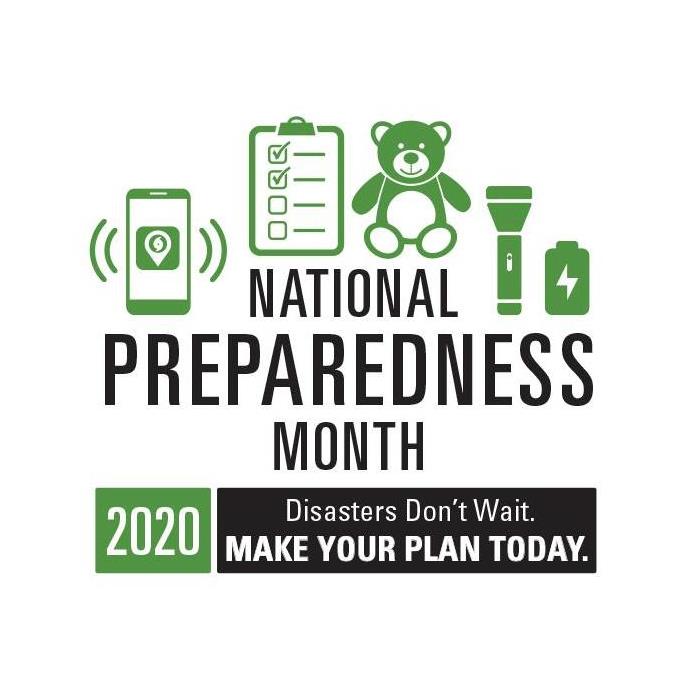Archived General Blog Posts
If You Can Gaze Into the Future... | Preventing Accidents at Home
9/16/2020 (Permalink)
We’ve approached week 3 of the National Preparedness Month. This week, We will discuss the importance of preparing for disaster.
Wouldn’t it be great you knew a disaster was coming before it happens? Just imagine, you’re sitting down, enjoying your meal with your family. Then suddenly, you get an odd flash in your eyes and you’re able to catch a glimpse of your ruined basement that has been flooded by next week’s hurricane. Now that you know what’s going to happen, you’d set yourself up however you can, and immediately!
But, unless you’re a Disney Channel character, you probably don’t have psychic abilities. However, there are simple ways to prevent accidents from becoming catastrophic or from happening at all. Here is a comprehensive suggestions list to prevent further damages.
Preventing Accidents At Home
- Make an emergency plan
- Changing smoke detector batteries as soon as they die
- Have your wiring installation checked at least once every five years by an approved contractor, or straight away if you are buying an older property
- Opening windows and turning off suppliers if you suspect a gas leak
- Taking out built-up lint from the dryer vent
- Have electric blankets serviced and checked regularly
- Never leave any pans unattended while cooking.
Despite how trivial these suggestions may be, many accidents could have been avoided if simple tasks would have been implemented. But until you’re able to see into the future, we strongly encourage preparing for the worst. Lastly, as always, if you need any additional help while dealing with home damages, SERVPRO is always here to help.
For more information on how to prevent an accident at home visit https://www.rospa.com/Home-Safety/Advice/General/Preventing-Accidents-in-the-Home.aspx and ready.gov
Is Your Family Prepared For The Next Emergency?
9/9/2020 (Permalink)
 Logo for National Preparedness Month provided by ready.gov
Logo for National Preparedness Month provided by ready.gov
September is National Preparedness Month! (NPM). This month we will be promoting family and community disaster planning. Each week we will highlight a specific theme to help you stay proactive and safe.
Week 1: Make a Plan
Each region of the United States deals with different natural disasters. Therefore, each household must know the most common national disaster for that area. Each emergency plan will be different. So, with the help of ready.gov, we provided a guide to help with strategizing your custom Emergency Plan.
Step 1: Communicate with household members
Make sure all household members are present during the meeting, to eliminate any misunderstandings. Establish important protocols such as
- Best way to receive emergency alerts/warnings
- House shelter plan
- Evacuation route
- Household communication plan
- Creating or updating emergency preparedness kit
- Review the Centers of Disease Control (CDC) Coronavirus prevention guide and update the proposed plan if necessary.
Step 2: Understand the specific needs of the household
As you craft your emergency plan, make sure it is a realistic plan for each member. Here some factors to take into consideration when executing your plan
- Did you assign a designated assistant?
- Does the emergency food fit everyone’s dietary needs? (Diabetes, Baby Formula, Vegan, etc.)
- Does your first aid kit reflect everyone medical needs (Extra Inhaler, Epi-pen, Vital Medications, etc.)
- Does the plan respect each house member’s cultural and religious consideration?
- Did you think about the Pets/Service animals?
- Is the proposed plan functional for each member? ( Disabled members, infants, and young children, etc.)
Step 3: Fill out the Emergency Plan
A PDF Emergency plan for parents is available for download at ready.gov/plan, Or you can write your own.
Step 4: Practice, Practice, Practice
Hold practice drills with all household members with different scenarios.
If you’d like more information about disaster planning, please visit ready.gov. Stay safe everyone!
How to Prepare for Hurricane Season
8/10/2018 (Permalink)
Hurricanes are massive storm systems that form over ocean water and often move toward land. Threats from hurricanes include high winds, heavy rainfall, storm surge, coastal and inland flooding, rip currents, and tornadoes. The heavy winds of hurricanes can cause damage or destroy homes, buildings, and roads, as well as cause power, water, and gas outages. These effects can injure or kill people, disrupt transportation, and pollute drinking water. Hurricanes cause deaths and injuries primarily from drowning, wind, and wind-borne debris. The impact from hurricanes can extend from the coast to several hundred miles inland. To find your risk, visit FEMA’s “Know Your Risk Map.” Be better prepared for this hurricane season, and learn more at ready.gov/prepare.
- Stayed informed
- Plan for evacuation
- Take action to protect your property from against wind and water damage
For more information check out www.fema.gov
Before you read can you tell us the 5 most common Fire Hazards?
8/10/2018 (Permalink)
Below are the most common Fire Hazards in your home.
It's a fact that many house fires are caused by someone attempting to cook or smoke while under the influence of alcohol.
Candle fires happen in places like bedrooms and bathrooms where people use them as mood enhancers. Unfortunately, people can fall asleep with a candle still burning or leave the room without snuffing out the flame. Candles should NEVER be left burning unattended!
Many items in the kitchen can catch fire easily including pot holders, dish towels, and product packaging. Keep curtains away from the stove and clean up all spills on the stove top or near by counters.
Unsafe use of electricity can be a ticking time bomb! An electrical fire can happen at any time. Follow-up when a fuse or circuit breaker blows. Don't just reset the breaker or replace the fuse. Find out what caused the problem.
Too many fires are caused from careless disposal of smoking materials
Spring Is Here
3/20/2018 (Permalink)
Today is the spring equinox — when the day and night are equal in length. The word equinox comes from the Latin for equal and night. Almost everywhere in the world today, nighttime and daytime are each 12 hours.
We use the equinox to mark the change of seasons, as the balance of light shifts to make for longer days or nights. It usually means that it's time to hunker down for colder seasons, or time to rise and shine for warmer ones, as in the case of our furry friend the mouse! You may also notice that on the equinox, the sun rises directly in the east and sets directly in the west, whereas at other times in the year, it appears off-center if you're facing those directions. Today, we mark the equinox with a Doodle to celebrate the changing seasons.




 24/7 Emergency Service
24/7 Emergency Service


